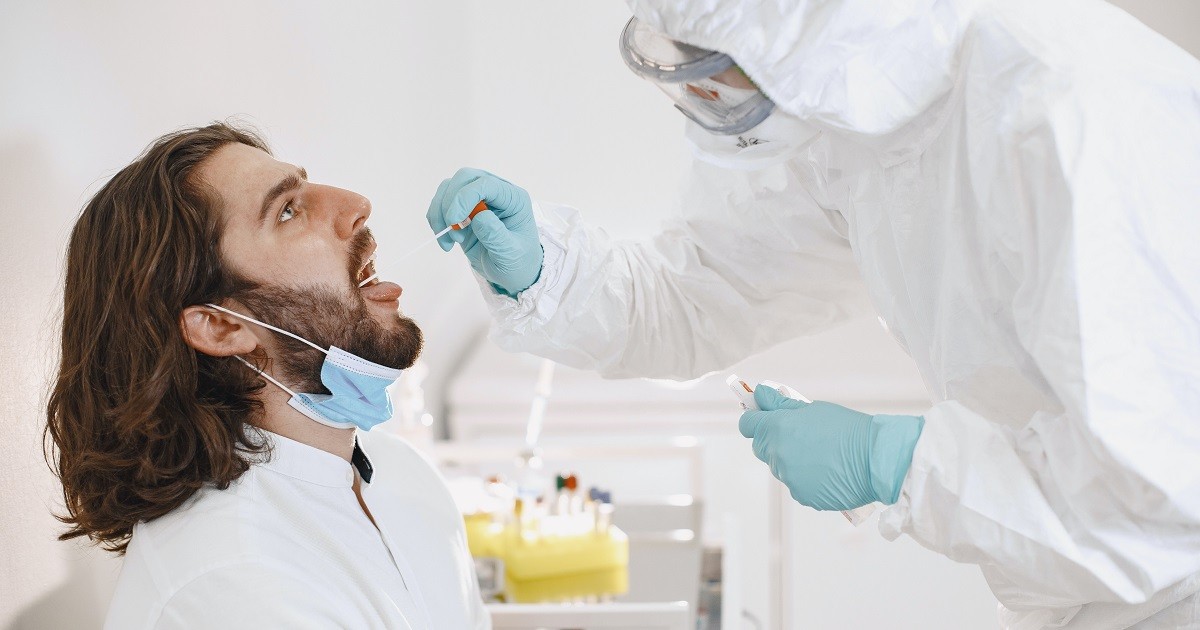Mouth cancer rates not increased by Covid-19 test swabs

A Facebook post that appears to link Covid-19 test swabs to mouth cancer is misleading.
The post is captioned “Be careful what you stick down your throat” and shows a screenshot of a tweet that states: “Mouth cancer has hit an all time high! […] when you stick a swab down you’re [sic] throat for 3 years thats covered in Ethylene Oxide which [is] high on the cause of cancer list what did people expect”.
Covid-19 test swabs are sterilised with ethylene oxide, which is commonly used in the sterilisation of medical equipment.
While it can cause cancer in certain quantities, there is no evidence or reason to believe the way it is used to sterilise test swabs is causing cancer. Mouth cancer rates, in the UK at least, are high but have been increasing for many years.
We have previously written about false claims relating to the substance and cancer risk from test swabs.
Ethylene oxide
Ethylene oxide is a colourless gas that is used to sterilise medical equipment and, although overexposure can be dangerous, its use does not make medical products like swab tests unsafe.
Ethylene oxide is used to sterilise swabs used in Covid tests, which appears to be what the post refers to. After sterilisation, ethylene oxide must be removed from the swabs, and the manufacturer has to confirm that any residual level is below the required international standard, verified by an independent third party.
The Department of Health and Social Care previously confirmed to Full Fact that a minimal amount of ethylene oxide is used for sterilisation of the swabs—just 1-2μg (millionths of a gram).
The International Agency for Research on Cancer has stated that ethylene oxide is carcinogenic to humans. It has categories for different levels of cancer risk and while ethylene oxide is in the top category, chronic exposure at sufficient levels is required for any significant risk to occur. Other items in the top category include alcoholic beverages, processed meat and the contraceptive pill.
Exposure limits are set by the Health and Safety Executive in the UK to reduce the risk to workers who may come into contact with the chemical.
The Medicines and Healthcare products Regulatory Agency states that exposure to ethylene oxide via Covid swabs leads to limited time exposure and poses “minimal risk”.
The UK Health Security Agency states: “Any traces of ethylene oxide remaining in medical devices (for example lateral flow devices) after sterilisation are below limits that would be considered hazardous to health and comply with international standards.”
So while heavy exposure to the chemical itself is “cause of cancer”, the levels of exposure to it from using Covid swabs as directed is extremely unlikely to be.
Mouth cancer
The post also claims that “Mouth cancer has hit an all time high!”. It is not clear what area or timeframe this refers to, or whether it means numbers of cases or deaths.
In terms of deaths from mouth cancer, ONS mortality statistics show a steady increase in England and Wales, rising from 2,226 in 2013 to 2,953 in 2021. The death rate adjusted for age has also generally trended up over this time period. The increase in deaths and age adjusted rate from 2019 to 2020 and 2020 to 2021 are not notably larger than previous years, with the largest jump in both happening between 2015 and 2016.
Cases of the wider category of head and neck cancer have been generally increasing over the last 30 years in the UK.
So, while we can’t say whether “mouth cancer has hit an all time high”, it seems fair to note that the prevalence of mouth cancer appears to be increasing in the UK at least in recent years.
The State of Mouth Cancer UK Report 2022
In the course of researching this fact check, we came across a report from the Oral Health Foundation about mouth cancer which was widely covered in news outlets as well as by the British Dental Journal.
But the press release for the report contains inaccuracies, which are repeated on the webpage for the report.
The release, dated November 2022, claims: “Figures collected by the Oral Health Foundation show that 8,864 people in the UK were diagnosed with the disease last year”. However, within the report itself there is no mention of “last year”, and a graph of cases over time stops in 2019.
A spokesperson for the charity told Full Fact that the data they used in the report was from 2018 to 2019 (varying between the nations of the UK) and this led to a headline figure of 8,864 people diagnosed a year during that period. Since releasing the report, they have obtained full 2019 data for all four nations.
The press release also states that the 8,864 figure represents an increase of 34% over the past 10 years, and cases have “more than doubled (103%) within the last generation”.
But 8,864 was the estimate for the UK as a whole, and the charity confirmed with Full Fact that the percentage changes were for English data alone. Using the full 2019 data, shared with Full Fact by the charity, we can see that mouth cancer cases actually increased 44% between 2009 and 2019 for the UK as a whole.


